#Mobil gasoline
Text
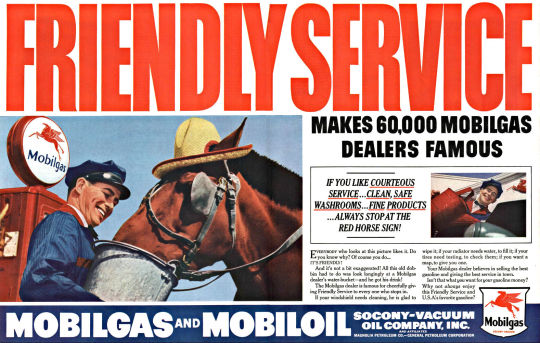
Socony-Vacuum Oil Company Inc, 1938
#Mobilgas#ad#1938#vintage#Mobiloil#advertisement#1930s#friendly service#Mobil gasoline#service stations#red horse#pegasus#advertising#gas pump
57 notes
·
View notes
Photo

Depend on your Mobil dealer.
1 note
·
View note
Text
Gas Station Stream of Consciousness Post
Gas Stations as Liminal Spaces
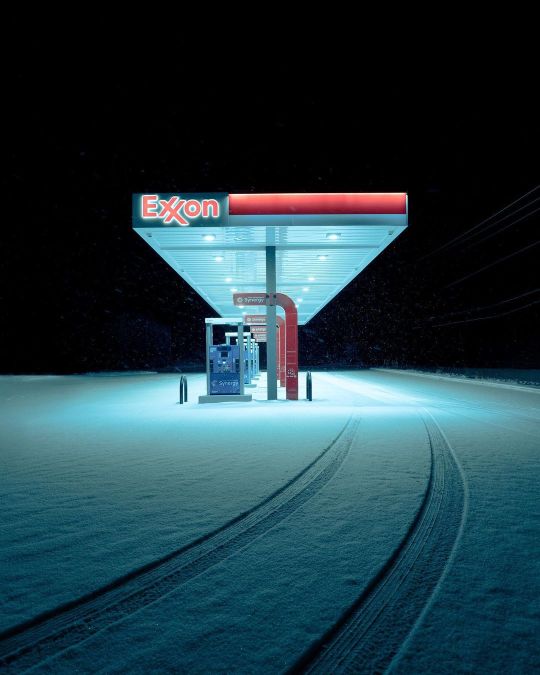
I've had quite a few hyperfixations in my day - ATMs, laundry detergents, credit cards - so my current one pertaining to gas stations is fitting considering my affinity for liminal spaces and the dedication of this blog to them. Liminal spaces are transitory in nature, hence their portrayal in online circles through photos of carpeted hallways, illuminated stairwells, dark roads, and backrooms, among other transitional points.

Gas stations are posted online as well; images of their fuel pumps or neon signage photographed through a rainy car window communicate their liminality and the universal experiences they provide to all of society. Perhaps they are the ultimate specimen of a liminal space. The machines they are created for, automobiles and tractor trailers alike, themselves are tools for motion, vestibules that enable travel and shipment across long distances at high speeds. Cars and roads are liminal spaces, albeit in different formats, and gas stations serve as their lighthouses. Vehicles at filling stations, therefore, are in a sense liminal spaces within liminal spaces within liminal spaces.
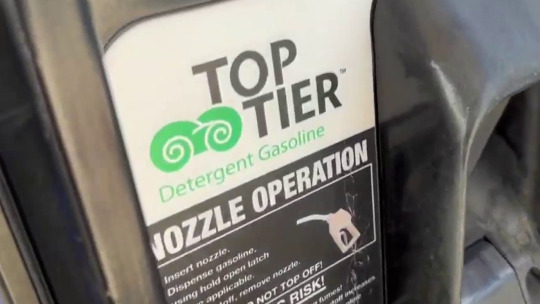
The uniqueness of a gas station as a liminal space, however, is its intersection with the economics and aesthetics of capitalism. Gasoline (and diesel fuel) is a commodity, downstream from crude oil, merely differentiated by octane ratings. Some argue that minute distinctions between agents, detergents, and additives make some brands better than others. Indeed, fuels that are approved by the Top Tier program, sponsored by automakers, have been shown to improve engine cleanliness and performance, but this classification does not prefer specific refiners over others; it is simply a standard. To a consumer, Top Tier fuels are themselves still interchangeable commodities within the wider gasoline commodity market.
The Economics of Gas Stations

The market that gas stations serve is characterized by inelastic demand, with customers who reckon with prices that fluctuate day in and day out. This is not to say that consumer behavior does not change with fuel prices. It has been observed that as prices rise, consumers are more eager to find the cheapest gas, but when prices fall, drivers are less selective with where they pump and are just happy to fill up at a lower price than last week. In response, gas stations lower their prices at a slower rate than when increasing prices, allowing for higher profit margins when wholesale prices fall. This has been dubbed the "rockets and feathers" phenomenon.

When portrayed as liminal spaces, gas stations are most often depicted at night, places of solitude where one may also enter the adjacent convenience store and encounter a fellow individual who isn't asleep, the modern day lightkeeper. The mart that resides at the backcourt of a gas station is known to sell goods at higher prices than a supermarket, simultaneously taking advantage of a captive customer, convenient location, and making up for the inefficiencies of a smaller operation. It may come as no surprise, then, that gas stations barely make any money from fuel sales and earn their bulk through C-store sales. This is a gripe I have with our economic system. Business is gamified, and in many cases the trade of certain goods and services, called loss leaders, is not an independent operation and is subsidized by the success of another division of a business, a strategy inherently more feasible for larger companies that have greater scale to execute it.
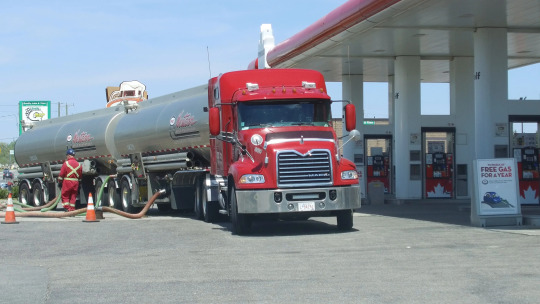
Nevertheless, most gas station owners, whether they have just one or hundreds of sites, find this method fruitful. Even though most gas stations in the US sell one of a handful of national brands, they operate on a branded reseller, or dealer, model, with oil companies themselves generally not taking part in the operations of stations that sell their fuels. The giants do still often have the most leverage and margin in the business, with the ability to set the wholesale price for the distributor, which sells at a markup to the station owner, which in turn will normally make the least profit in the chain when selling to the end customer at the pump. This kind of horizontal integration that involves many parties lacks the synergies and efficiencies of vertical integration that are so applauded by capitalists, but ends up being the most profitable for firms like ExxonMobil, who only extract and refine oil, and on the other end of the chain merely license their recognizable brands to the resellers through purchasing agreements. Furthermore, in recent years, independent dealers have sold their businesses to larger branded resellers, in many cases the ones from whom they had been buying their fuel.
A Word on ExxonMobil's Branding Potential
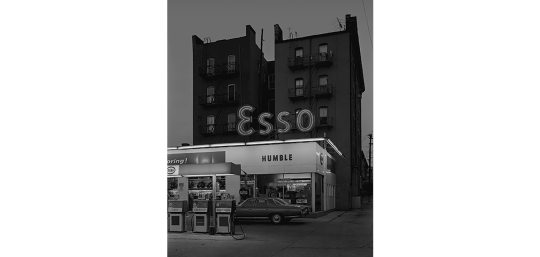
The largest publicly traded oil company in the world is Exxon Mobil Corporation. It is a direct descendent of the Rockefeller monopoly, Standard Oil, which was broken up in 1911 into 34 companies, the largest of which was Jersey Standard, which became Exxon in 1973. This title was generated by a computer as the most appealing replacement name to be used nationwide to unify the Humble, Enco, and Esso brands, decades before AI was spoken of. The latter brand is still used outside of the United States for marketing, arising from the phonetic pronunciation of the initials of Standard Oil. In 1999, Exxon and Mobil merged, and the combined company to this day markets under separate brands. Exxon is more narrowly used, to brand fuel in the United States, while Mobil has remained a motor oil and industrial lubricant brand, as well as a fuel brand in multiple countries.

Mobil originated in 1866 as the Vacuum Oil Company, which first used the current brand name for Mobiloil, and later Mobilgas and Mobilubricant products, with the prefix simply short for "automobile". Over time, Mobil became the corporation's primary identity, with its official name change to Mobil Oil Corporation taking place in 1966. Its updated wordmark with a signature red O was designed by the agency Chermayeff & Geismar, and the company's image for service stations was conceived by architect Eliot Noyes. New gas stations featured distinctive circular canopies over the pumps, and the company's recognizable pegasus logo was prominently on display for motorists.

I take issue with the deyassification of the brand's image over time. As costs were cut and uniformity took over, rectangular canopies were constructed in place of the special ones designed by Noyes that resembled large mushrooms. The pegasus remained a prominent brand icon, but the Mobil wordmark took precedence, which I personally believe to be an error in judgement. This disregard for the pegasus paved the way for its complete erasure in 2016 with the introduction of ExxonMobil's "Synergy" brand for its fuel. The mythical creature is now much smaller and appears only at the top right corner of pumps at Mobil gas stations, if at all.

Even into the 90s and the 21st century the Pegasus had its place in Mobil's marketing. In 1997, the company introduced its Speedpass keytag, which was revolutionary for its time and used RFID technology, akin to mobile payments today, to allow drivers to get gas without entering the store or swiping a card. When a Speedpass would be successfully processed, the pegasus on the gas pump would light up red.

When Exxon and Mobil merged in 1999, the former adopted the payment method too, with Exxon's less iconic tiger in place of the pegasus.

The program was discontinued in 2019 in favor of ExxonMobil's app, which is more secure since it processes payments through the internet rather than at the pump.
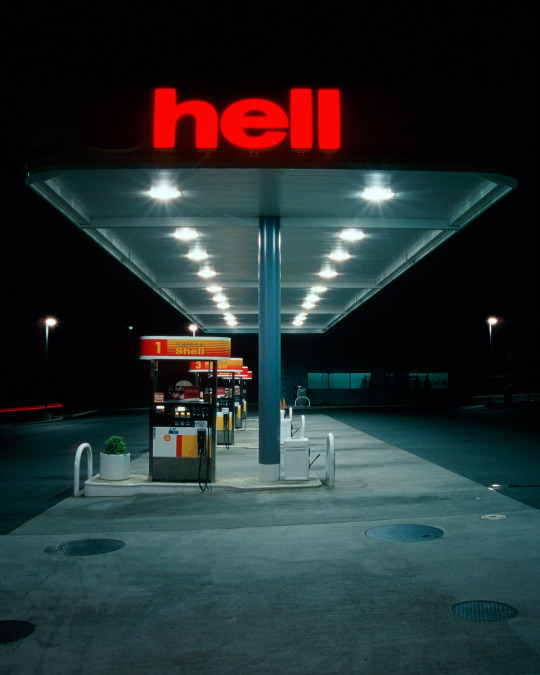
What Shell has done with its brand identity is what Mobil should've done for itself. The European company's logo was designed in 1969 by Raymond Loewy, and is a worth contender for the "And Yet a Trace of the True Self Exists in the False Self" meme. In recent years, Shell went all in on its graphic, while Mobil's pegasus flew away. I choose to believe that the company chose to rebrand its stations in order to prevent the malfunction in the above image from happening.

ExxonMobil should have also discontinued the use of the less storied Exxon brand altogether, and simplifying its consumer-facing identity to just the global Mobil mark. Whatever, neither of the names are actual words. As a bonus, here is a Google map I put together of all 62 gas stations in Springfield, MA. This is my idea of fun. Thanks for reading to the end!
#exxonmobil#exxon#mobil#gas station#gas stations#liminal space#liminal spaces#liminal#liminalcore#liminal aesthetic#justice for pegasus#shell#corporations#capitalism#branding#marketing#standard oil#economics#gas#gasoline#fuel#oil companies
106 notes
·
View notes
Text
out of gas

Dilton Doily had an 'e' added to the last name somewhere 70s. In reprinting, they drop the last name -- too much trouble redrawing the title.

Interesting Joan no longer is shown with white roots, and then not. No, they probably aren't even thinking on this -- just, a white gleam for the sake of it not transferable to the digest.

Moving off from Joan and Betty, no one else is into it. Come the contingencies. Jughead lugged a five gallon has can into the car he is borrowing from Archie for his date with Ethel?

The half page Sabrina lay in a strange place -- at this point, the mortals she dates are aware that they interact with supernatural beings.
#Archie Comics#Dilton Doiley#Joan#Archie Andrews#Betty Cooper#Reggie Mantle#Veronica Lodge#Sabrina Spellman#Rhonda#Date night#Gasoline#Out of gas#Ol' Betsy#Automotive repair#Snow mobile#Snowshoes#Title card#White roots#1961#Al Hartley#1970#Dan Decarlo#1967#Gus Lemoine#Bill Vigoda#Stan Goldberg#1973#unrequited love
4 notes
·
View notes
Text
NGK SPARK PLUG



Una vez que te subes ya no te bajas! // Once you get on, you don't get off!
#matalobos#vintage#illustration#retro#drawing#artwork#hand drawn#50's#gasoline#race#motard#motorsports#motorcycle#motorbike#motorhead#motorrad#bmw#bmwmotorrad#indian#harleydavidson#ossa#benelli#tshirt#sweatshirt#carhartt#white tshirt#iphone#mobile phone#angel nieto#giacomo agostini
2 notes
·
View notes
Photo

1951 First Order Of The Day_ Produce! Socony-Vacuum Correct Lubrication
Source: Time Magazine
Published at: https://propadv.com/petroleum-ad-and-poster-collection/mobil-ad-and-poster-collection/
8 notes
·
View notes
Photo

Jethro may have not have any practical use for Mobilgas but you’ll often find him behind the barn huffiin’ a rag full.
Life June 30th 1941
#vintage ads#vintage ad#advertising#advertisment#1941#gasoline#automotive#mobil#1940s#1940s ad#1940's#1940's ad#funny#humor#humour
5 notes
·
View notes
Text

1942 Protect Horsepower. that's Horse Sense! Mobilgas. Mobiloil
Source: www.flickr.com / x-ray_delta_one
Published at: https://posterhistory.com/petroleum/mobil/
1 note
·
View note
Text

Madaba Gasoline Station
by Javier Arcenillas
OnePlus Mobile Photography Awards 2023
#javier arcenillas#photographer#oneplus mobile photography awards#madaba gasoline station#black & white photography#portrait
0 notes
Text

Some Mobil service stations around Australia had larger stores bearing the name of Quix.
These lasted from possibly the late 1980s up to 2011 when the Mobil brand went dormant and most of its older (pre 2010s) locations nationwide were rebranded into 7-Eleven or On The Run (OTR).
#mobil#petrol#gas#gasoline#service station#petrol station#quix#food#store#shop#grocery store#convenience store#australia#australian#nostalgia#throwback#flashback#1980s#80s#1990s#90s#retro#rewind#childhood#memories#logo#logopedia
0 notes
Text
Ancient redwoods recover from fire by sprouting 1000-year-old buds
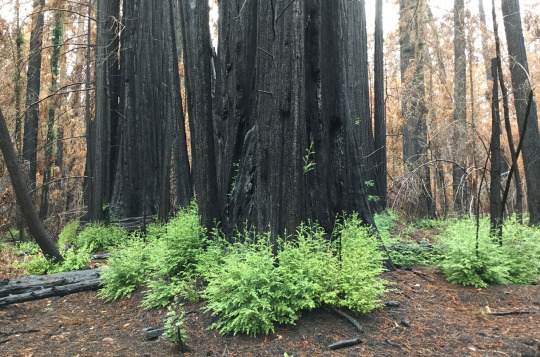
Article | Paywall free
When lightning ignited fires around California’s Big Basin Redwoods State Park north of Santa Cruz in August 2020, the blaze spread quickly. Redwoods naturally resist burning, but this time flames shot through the canopies of 100-meter-tall trees, incinerating the needles. “It was shocking,” says Drew Peltier, a tree ecophysiologist at Northern Arizona University. “It really seemed like most of the trees were going to die.”
Yet many of them lived. In a paper published yesterday in Nature Plants, Peltier and his colleagues help explain why: The charred survivors, despite being defoliated [aka losing all their needles], mobilized long-held energy reserves—sugars that had been made from sunlight decades earlier—and poured them into buds that had been lying dormant under the bark for centuries.
“This is one of those papers that challenges our previous knowledge on tree growth,” says Adrian Rocha, an ecosystem ecologist at the University of Notre Dame. “It is amazing to learn that carbon taken up decades ago can be used to sustain its growth into the future.” The findings suggest redwoods have the tools to cope with catastrophic fires driven by climate change, Rocha says. Still, it’s unclear whether the trees could withstand the regular infernos that might occur under a warmer climate regime.
Mild fires strike coastal redwood forests about every decade. The giant trees resist burning thanks to the bark, up to about 30 centimeters thick at the base, which contains tannic acids that retard flames. Their branches and needles are normally beyond the reach of flames that consume vegetation on the ground. But the fire in 2020 was so intense that even the uppermost branches of many trees burned and their ability to photosynthesize went up in smoke along with their pine needles.
Trees photosynthesize to create sugars and other carbohydrates, which provide the energy they need to grow and repair tissue. Trees do store some of this energy, which they can call on during a drought or after a fire. Still, scientists weren’t sure these reserves would prove enough for the burned trees of Big Basin.
Visiting the forest a few months after the fire, Peltier and his colleagues found fresh growth emerging from blackened trunks. They knew that shorter lived trees can store sugars for several years. Because redwoods can live for more than 2000 years, the researchers wondered whether the trees were drawing on much older energy reserves to grow the sprouts.
Average age is only part of the story. The mix of carbohydrates also contained some carbon that was much older. The way trees store their sugar is like refueling a car, Peltier says. Most of the gasoline was added recently, but the tank never runs completely dry and so a few molecules from the very first fill-up remain. Based on the age and mass of the trees and their normal rate of photosynthesis, Peltier calculated that the redwoods were calling on carbohydrates photosynthesized nearly 6 decades ago—several hundred kilograms’ worth—to help the sprouts grow. “They allow these trees to be really fire-resilient because they have this big pool of old reserves to draw on,” Peltier says.
It's not just the energy reserves that are old. The sprouts were emerging from buds that began forming centuries ago. Redwoods and other tree species create budlike tissue that remains under the bark. Scientists can trace the paths of these buds, like a worm burrowing outward. In samples taken from a large redwood that had fallen after the fire, Peltier and colleagues found that many of the buds, some of which had sprouted, extended back as much as 1000 years. “That was really surprising for me,” Peltier says. “As far as I know, these are the oldest ones that have been documented.”
... “The fact that the reserves used are so old indicates that they took a long time to build up,” says Susan Trumbore, a radiocarbon expert at the Max Planck Institute for Biogeochemistry. “Redwoods are majestic organisms. One cannot help rooting for those resprouts to keep them alive in decades to come.”
-via Science, December 1, 2023
#redwoods#california#wildfire#climate change#extreme heat#natural disasters#botany#plant biology#photosynthesis#santa cruz#hopepunk#sustainability#climate hope#united states#good news#hope
12K notes
·
View notes
Text
Riding the Future: India Gasoline Scooter and Motorcycle Market Trends and Sustainable Mobility Solutions
In India, electric scooters and motorcycles are rapidly coming onto the roads, whereas gasoline ones are still leading the automotive industry. This is due to the large number of gasoline stations, road infrastructure, and low cost as compared to EVs.
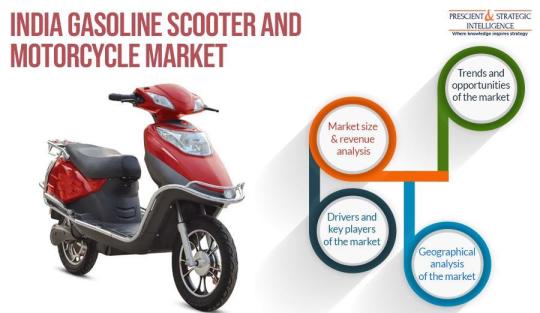
Therefore, the Indian gasoline scooter and motorcycle market is expected to grow at a significant CAGR in the coming years. This is also due to the increasing income levels and the rising needs from tier 2 and tier 3 cities in the country. Moreover, people are further encouraged to buy these automobiles by factors such as simpler financing choices, fuel-efficient versions, and steep discounts on these vehicles.
Additionally, despite owning personal vehicles, a lot of individuals are buying two-wheelers for shorter commutes since they are simple to operate and park in crowded locations. Due to this, two-wheelers are quickly becoming a second mode of transportation in Indian families. These automobiles run on gasoline and are considerably smaller and lighter than passenger cars. As a result, they are a wonderful choice for traveling on busy and congested highways, particularly in a nation like India.
The major product category in the Indian automobile industry is motorcycles. This is because the country has a relatively high motorbike ownership rate of 108 bikes per 1,000 people.
Ranges for electric cars vary from 200 km to 300 km. It is not a problem because it has a regenerative drive in the city and can recover there; on the highway, however, it merely drains. If there were more chargers accessible, it wouldn't be a problem, however, that isn't the case now. Additionally, it is challenging to plan a road trip in an EV due to the scarcity of charging stations.
#India Gasoline Scooter and Motorcycle market#two-wheeler revolution#market analysis#scooter and motorcycle innovations#market trends#urban transportation#market dynamics#personal mobility#Gasoline Scooter and Motorcycle market outlook in India
0 notes
Text

Booster Fuels: Paving the Green Path to a Sustainable Future
Renewable fuels are eco-friendly alternatives to conventional fossil fuels, harnessing the power of renewable resources like solar, wind, and biomass to minimize carbon emissions and combat climate change. Meanwhile, Booster Fuels is a leading innovator in mobile refueling, efficiently delivering clean and sustainable energy solutions to support a greener tomorrow.
Visit: https://boosterusa.com/products-gas/
#fuel delivery#diesel delivery#gasoline delivery#renewable diesel#fleet fueling#renewable fuels#mobile gas#booster fuels
0 notes
Text
1 note
·
View note
Photo

The starting point of economy motoring.
1 note
·
View note
Text



Texaco Fire Chief, Las Vegas Strip, 1947
The service station opened on the grounds of Last Frontier Hotel in 1947, styled to match the resort's all-encompassing Old West theme, and featuring what is likely the Strip's first large scale animated neon sign. This became a Mobil station in the 60s, demolished in '66.
Photo: Texaco Fire Chief, late construction, 1947.
Article: Fire Station? Hey, That’s A Gas Station. Review-Journal, 9/3/50
One of the most unique gasoline stations in the world is the Texaco "Fire Station" located near the entrance to the Last Frontier Village, operated by William "Andy" Anderson.
The structure is a combination of several separate buildings of the 1856 period. A horse-drawn pumper stands at the front of the building. This was the first piece of equipment west of the Mississippi and was hauled piece by piece in covered wagons to Virginia City. It cost $4,000 and dates back to 1893. After service In Virginia City, Reno, and Fallon, it was purchased by the Last Frontier.
Also on display Is a hand-pulled fire engine which dates back 130 years. The carriage Is supported by four large wood-spoked wheels and has a revolving drum In the center of wood, brass and nickel.
But what attracts the greatest number of tourists Is the brilliant neon-lighted sign over the gas station canopy. It depicts horses drawing a pumper, even to smoke belching from the stack, with two firemen aboard.
L. F. Manis Photograph Collection (PH-00100), UNLV Special Collections.
528 notes
·
View notes